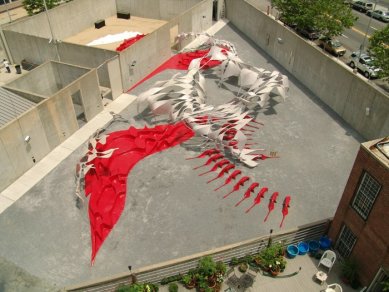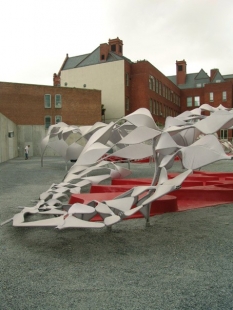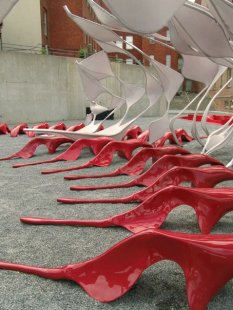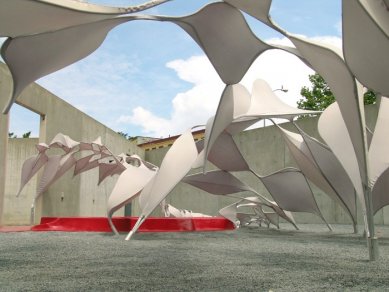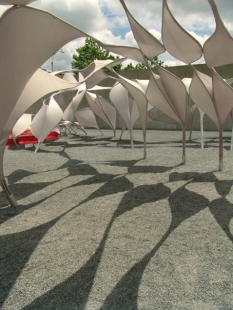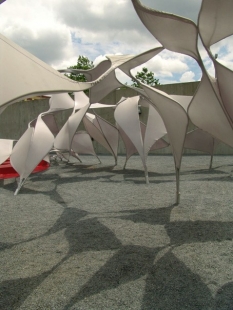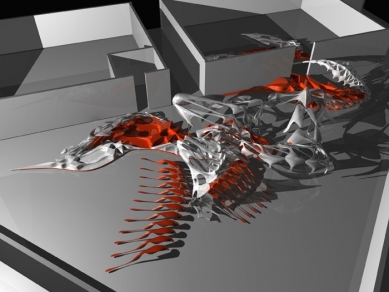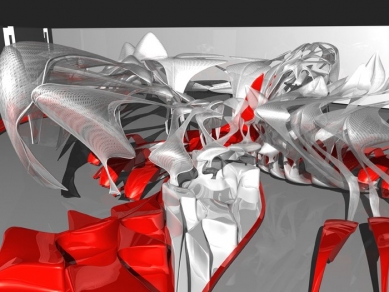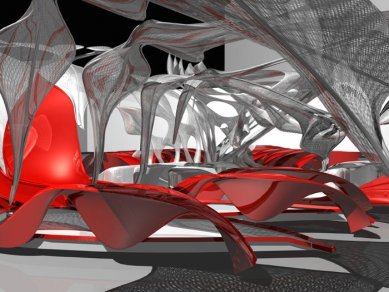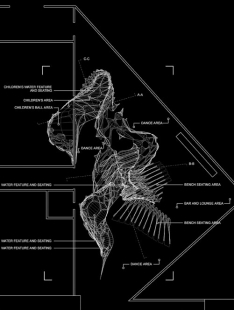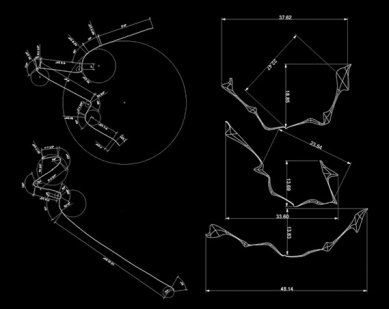
Sur – MoMA/P.S.1 2005 Young Architects Program

P.S.1, a branch of New York's MoMA focusing exclusively on contemporary art, established a tradition of temporary summer pavilions in the courtyard of the museum eight years ago. With the exception of the second year, when the shelter was designed by the legendary Philip Johnson, it has always involved young architects around thirty. Since 2000, the entire event has been renamed the Young Architects Program, with several invited firms competing for the realization of the project. The history is as follows: SHoP (2000), ROY (2001), William E. Massie (2002), Tom Wiscombe (2003), nARCHITECTS (2004), Xefirotarch (2005), and this year's author will be the New York firm OBRA.
The sixth summer pavilion at P.S.1 was on view from June 22 to August 22, 2005, and was designed by Hernán Díaz Alonso from the Los Angeles office Xefirotarch. The project, titled Sur, is far more sculptural than previous installations, which offered protective shelters or artificial landscapes with cabins. “The idea of the project was to reduce the scale of the pavilion and create a more personal relationship to the human body,” says Alonso, who also calls the project a “playground for adults.” The base of the installation is made of fiberglass, rubber, and the self-supporting lightweight shelters are made from aluminum tubes, over which a fabric coated with artificial material is stretched. The light, playful structure resembles paper kites but also has a sun-bleached skeleton appearance. Alonso describes this aesthetic experience as “terrifying and humorous.” The name Sur is derived from the tango, which “has a playful rhythm, and we always name our projects after songs.”
Alonso further says about the pavilion: “This project, like all our designs, belongs to certain groups. SUR belongs to a group of projects that started with a competition proposal for a concert hall in Pusan, Korea, which ultimately received the fourth prize. When we were approached by ArchiLab and the Venice Biennale to exhibit the project here, we took advantage of it and further developed the project. In the end, we created a whole new group of designs based on ideas related to topology and cellular grouping. We also began to work more and more with scripting and particles (note - terms from advanced 3D graphics). The development of this project with models, renders, plans, and all those things we did for the Venice Biennale served as a laboratory for what we would like to do in the future.
Sur for PS1 is part of the group of projects that began with the concert hall in Pusan. It is simply more precise and also smaller in size. Similar to Pusan, the project develops according to the logic initiated by a single cell that further multiplies according to precisely defined rules. The coded cells start to behave like an organism, within which the individual parts interact with each other. This creates a whole where the parts are not modular. Rather, they are incremental variations of each unit. Another aspect of the project was the context in the sense of being designed for a place like summer New York and a lot of other things.”
The sixth summer pavilion at P.S.1 was on view from June 22 to August 22, 2005, and was designed by Hernán Díaz Alonso from the Los Angeles office Xefirotarch. The project, titled Sur, is far more sculptural than previous installations, which offered protective shelters or artificial landscapes with cabins. “The idea of the project was to reduce the scale of the pavilion and create a more personal relationship to the human body,” says Alonso, who also calls the project a “playground for adults.” The base of the installation is made of fiberglass, rubber, and the self-supporting lightweight shelters are made from aluminum tubes, over which a fabric coated with artificial material is stretched. The light, playful structure resembles paper kites but also has a sun-bleached skeleton appearance. Alonso describes this aesthetic experience as “terrifying and humorous.” The name Sur is derived from the tango, which “has a playful rhythm, and we always name our projects after songs.”
Alonso further says about the pavilion: “This project, like all our designs, belongs to certain groups. SUR belongs to a group of projects that started with a competition proposal for a concert hall in Pusan, Korea, which ultimately received the fourth prize. When we were approached by ArchiLab and the Venice Biennale to exhibit the project here, we took advantage of it and further developed the project. In the end, we created a whole new group of designs based on ideas related to topology and cellular grouping. We also began to work more and more with scripting and particles (note - terms from advanced 3D graphics). The development of this project with models, renders, plans, and all those things we did for the Venice Biennale served as a laboratory for what we would like to do in the future.
Sur for PS1 is part of the group of projects that began with the concert hall in Pusan. It is simply more precise and also smaller in size. Similar to Pusan, the project develops according to the logic initiated by a single cell that further multiplies according to precisely defined rules. The coded cells start to behave like an organism, within which the individual parts interact with each other. This creates a whole where the parts are not modular. Rather, they are incremental variations of each unit. Another aspect of the project was the context in the sense of being designed for a place like summer New York and a lot of other things.”
The English translation is powered by AI tool. Switch to Czech to view the original text source.
0 comments
add comment


